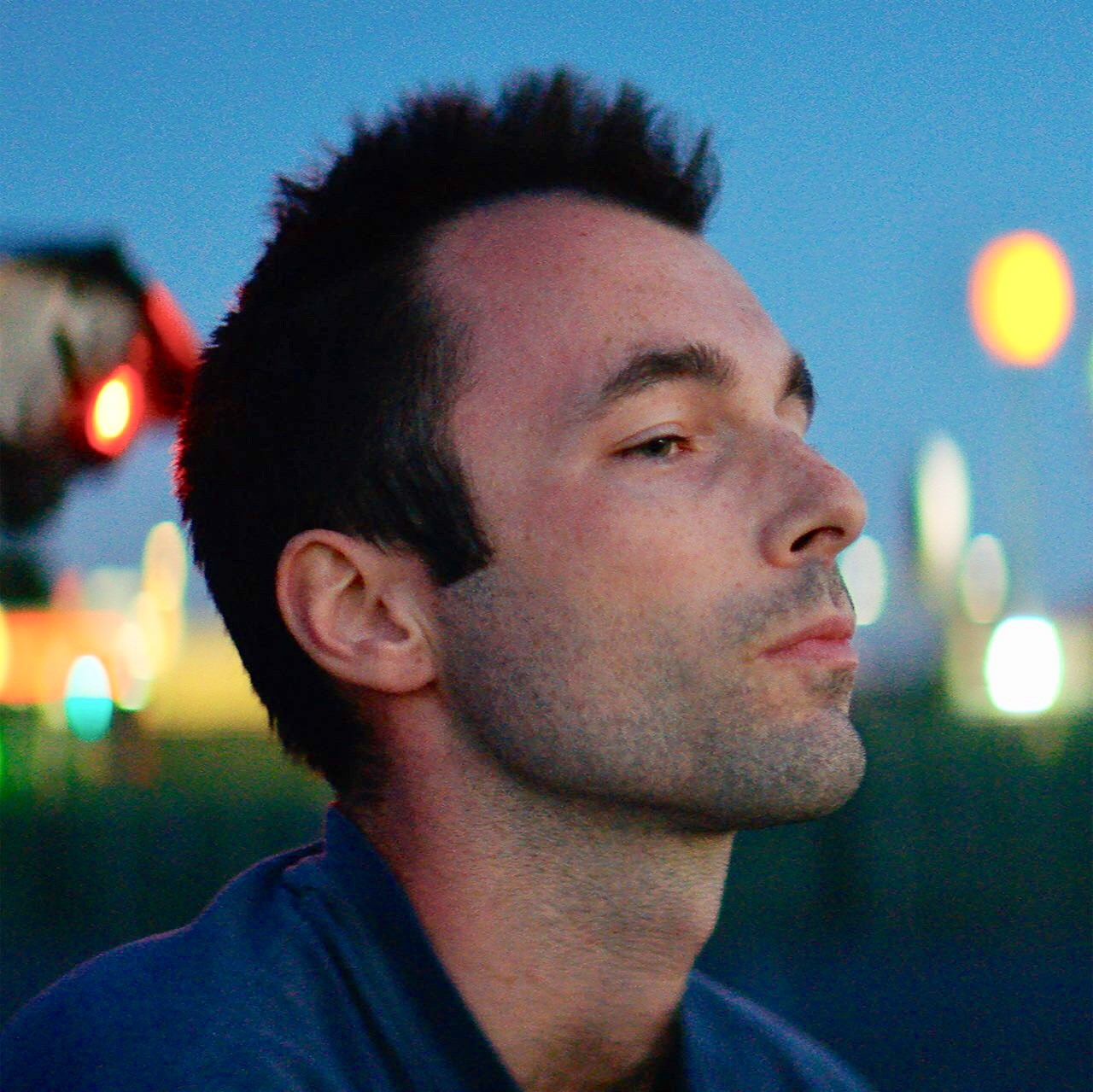
Ethan Healy in ‘Second Wind’
Ethan Healy returns to his Memphis roots in his new single, “Second Wind,” which was released along with the video July 23rd.
As he raps in the song, “South in my mouth/and man I can’t control it/even if I hold my breath”
“The song sounds like redemption to me,” says Healy, 27, who now lives in Los Angeles. “I spent a lot of 2019 doubting and second-guessing myself. And writing this song was really cathartic. The song began as a means of self-acceptance and, eventually, became a general commentary on life as I was seeing it. The song really opens up as it progresses. And, as the second verse continues, you hear a sort of push and pull between normal and pitched vocals. In the same way, I’ve really stepped into myself more fully this year.
“I’ve been working toward finding a balance between humility and ego. But, overall, the song, really, is kind of a coming to grips with myself. My inspiration. My identity. I was really kind of shutting my roots out for a while. So, calling on Memphis in the song really meant to be a reminder to myself: ‘This is where you’re from. This is what you’re inspired by.’”
And, Healy says, “‘I am Memphis,’ is what it essentially is saying.”
The Buick LeSabre in the “Second Wind” video is a nod to Memphis. “I got on the phone with Huey’s Midtown to figure out what type of Buick ran into the restaurant in the 1970s. The woman said she contacted some of their family and they couldn’t remember.”

‘Second Wind’
The Buick was “just to tie into the Memphis allusion and that specific moment. The first words are, “Fist-full of wind in the back of the Buick/Same one that wrecked into Madison Huey’s”
Being from Memphis is a plus, Healy says. “It really provided me with a fearlessness and creativity. Growing up in Midtown helped a lot because there was a freedom of expression there that became my baseline. That’s really all I knew was being able to express myself. And trying to express myself rather than holding everything in. I still hold stuff in, but I think growing up in Midtown but also having my friend group around me, I was surrounded by creative, musical people.”
Healy grew up playing soccer and other sports, but he also liked to sing. “I always liked singing in the shower all the time. We grew up going to IC (Cathedral of the Immaculate Conception). My mom was in the choir. She was always singing a bunch of hymns nonstop around the house.”
He wrote prose before he wrote music. Jamie Brummer, his advanced placement English teacher at Christian Brothers High School, “literally reached into the depths of me and pulled my voice out of me,” Healy says. “He really helped me find my voice. My poetic and writing style in general. He opened a lot of doors for me. We were reading stuff like a lot of Cormac McCarthy, Flannery O’Connor, learning about different writing styles.”
Healy’s parents divorced right after he got out of high school. “I needed a way to express myself. Get out the emotions I was feeling. I didn’t have that at the time. I picked up the guitar the summer after high school. I just kind of stayed in my room and learned guitar.”
He “cut his teeth” on hip-hop from grade school through middle school and then high school, so he rapped while he played guitar. “I grew up listening to a lot of rap.”
As for college, Healy, who had made some videos in high school, was drawn to film and video production. “I’ve always had an affinity for stories and storytelling and I thought that would be a really cool way of doing it.”
But his advisor at the University of Memphis “wasn’t as invested” in his future as Healy hoped. “I operate on feelings a lot. I did not get an ounce of good feeling from it. ‘I’m going to listen to my gut here.’ I had a secondary path. Physical therapy.”
Healy graduated in 2015 with a degree in exercise physiology.“And a few months later I started my doctorate at UT downtown in physical therapy.”
But music still was a part of him. During his last two years of college, he sat down and tried to figure out what he wanted to do with his craft. “I really enjoy music, but I want to create something I’m ultimately proud of that will really tell my story and really access some of the fictional styles I like as well. So, I storyboarded for a year or so and wrote a real coming of age story. It was basically like a rags-to-riches story where someone gains the world but loses everything.”
He wrote music to go with it. “I told the story through music and made it all one piece of art.”
Healy recorded three or four songs that were released on Soundcloud by 2015. A blog, Hillydilly (now Before the Data), picked him up and included the songs. “It was a blog a lot of music industry people kind of scout, watch to see who is making what music. That was really the turning point for me.”
He learned how to present his music to people “to make it more approachable. I’d made music for a while. I just wanted to figure out what’s not clicking with people. I tried a little less. The law of reversed effort was in full effect. I kind of loosened up a little bit and things started working. People started listening.”
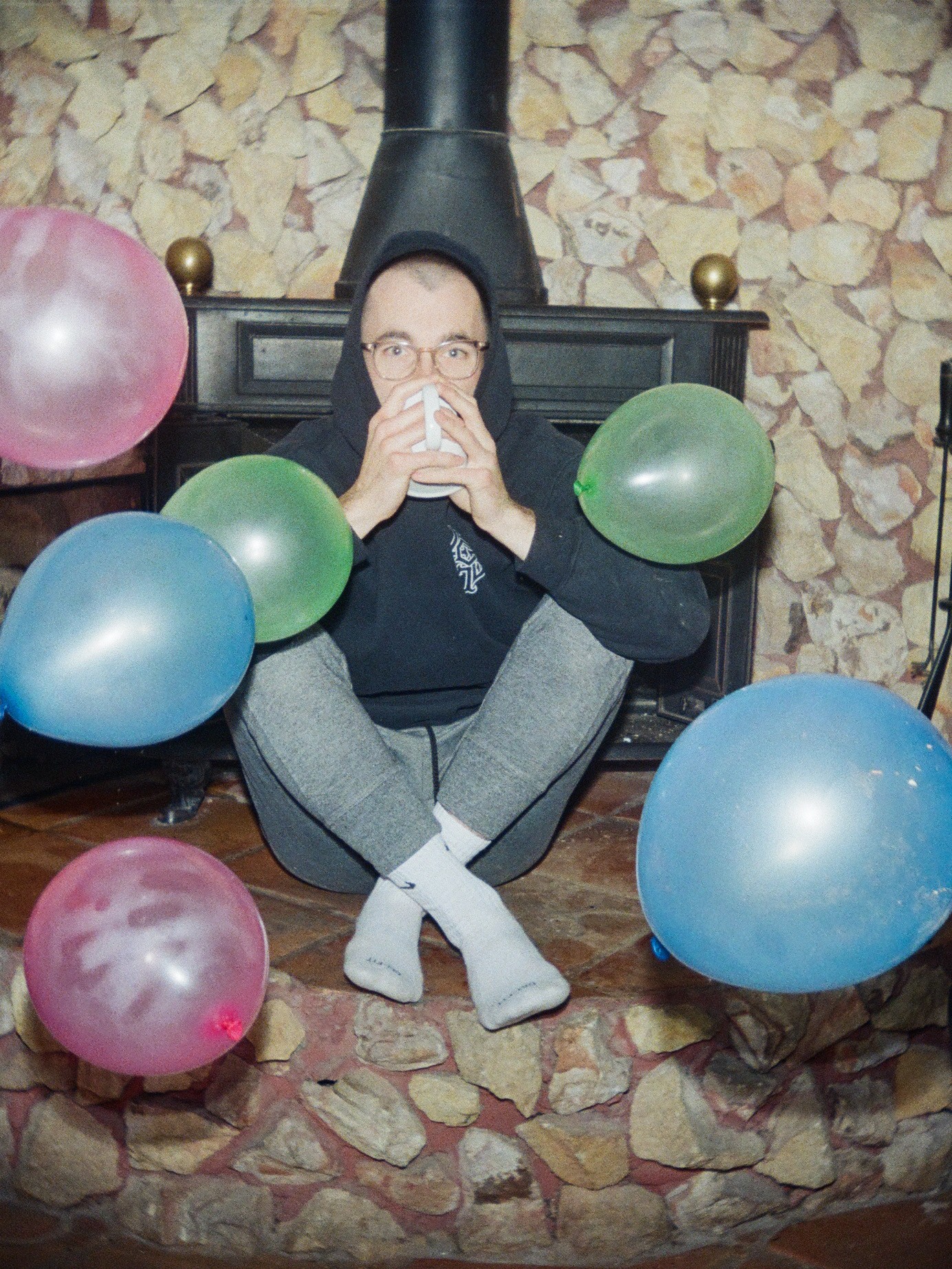 Henry Head
Henry Head
Ethan Healy
Healy never was employed at a job pertaining to his degree. “I was being approached by labels as I was making a living just with something I considered to be a hobby at this point. I figured it wouldn’t be productive for me to turn down an opportunity to really do something creative and fun.”
He released A Galaxy with Skin, a mixed tape, in 2015, and Subluxe, an album, in 2017. “They both told a very similar story from different perspectives and different levels of experience from different times of life. So, they’re all centering around this idea of recognizing what’s in front of you. And one vehicle for that would be the disillusionment of knowing what really matters when you’re given everything.”
Healy began using a binaural microphone in 2017 on Subluxe “for field recordings that would either serve as added textures or transitions between songs.
“The way the microphone processes audio is the same way the human ear receives audio. So, when you play these recordings back, if you had the headphones on, it sounds like you’re in the exact context the sound was recorded in. Some tires screeching on my car is like an exact 3-D map of where the audio is being recorded. It’s another way for me to inject nature and inject my perspective into the stories and have them push things forward. And create momentum.”
The microphone worked perfectly on “Build,” one of his songs on Subluxe. “It’s kind of an account of this one night in Memphis when I was growing up. My friends and I were skateboarding outside pretty late. We got the cops called on us by this one neighbor. It created this divide in our neighborhood. To be able to put the listener into the story, into the experience of the song, I used the binaural mike to convey some of the details of the night.
“A friend of mine is smoking a Black & Mild. You can hear the burning of the cigarillo in your right ear. And you can hear the gravel in your left ear and right ear at times.”
The binaural microphone is a way to “ground the listener in the experience and the story. It’s like a world for them to live in. It’s an escape, in a way.
“I had label interest from 2015 until 2018. I signed a joint venture with RCA in December of 2018.”
That same year, Healy finished grad school, went on tour with his music, and moved to Los Angeles.
He’s devoted three years to his current album. “I spent a lot of time figuring out exactly who I wanted to be in music and in life in general. And a lot I need to change about myself. I had a lot of opportunities to reflect on what I want to talk about and the stories I want to share.”
Healy took heart from Memphis hip-hop group Unapologetic. “I wanted to be Unapologetic. Fearlessly creative and not afraid to push boundaries in music. But also take matters in my own hands. I want to learn production more. I want to have a larger hand in the production of the music that is coming out under my name.
“Up until Subluxe, I had production credits on maybe two of the songs. For this next album, the majority of it came from my mind. Came from my hands. It feels really good.”
Healy wanted to take “more control in life. I needed to be more self aware. And more, I guess, less selfish and just more approachable. I had gone through some traumatic stuff and developed a lot of calluses for it and I think that was beginning to affect the people around me. And I wanted to be able to still be myself, but also learn the right way to be treating myself and others.”
He’s now “much more self aware and considerate of the world around me.”
Healy began to see a therapist after he moved to Los Angeles. “I uncovered different parts of myself. I’m a bad perfectionist. I have a tendency to have this all or nothing kind of thought. Very binary kind of thinking. I think I accept mistakes a lot better now. I know mistakes now don’t define me. I’m more forgiving of myself and others.”
He even changed his appearance at one point. “I had a lot of ego to dissolve. And a really easy way to cut the cord of the ego at the start of my therapeutic journey, in a way, was to shave my head. I spent so long on my appearance in the morning with my hair, it became an anchor that really dragged me down and buried me inside myself.”
Describing “Nikes On,” the first song he did on his current album, Healy says, “Fighting time is wasting time. It’s yours for the taking and not the other way around. It’s a reminder for me to stay present. With my perfectionism, I spent a lot of time trying to make the past perfect and worry about the future.”
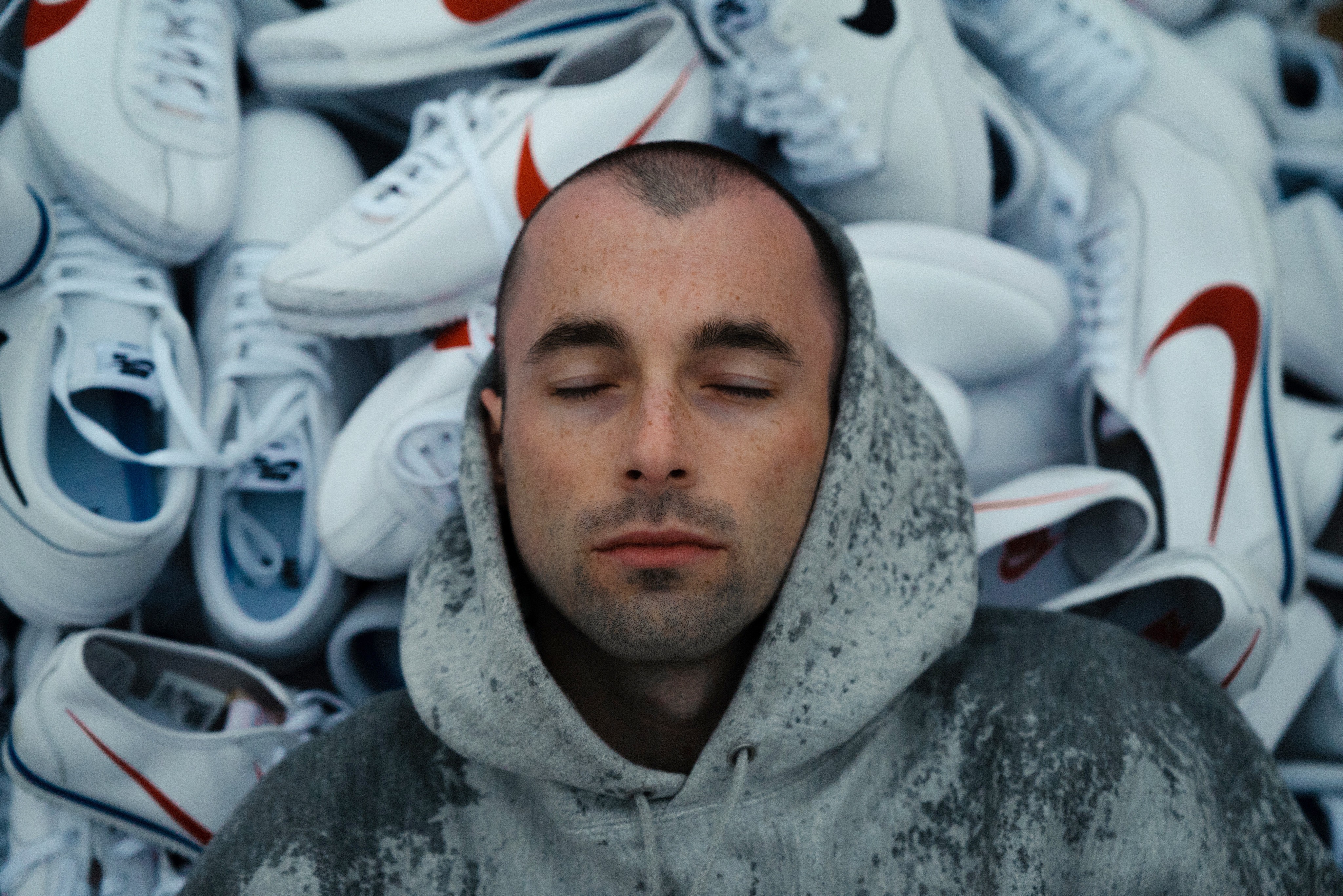
‘Nikes On’
As for wearing Nikes, Healy says, “I grew up listening to a lot of hip hop so Nike was mentioned in a lot of songs. And then I grew up playing sports and would always wear Nikes. I was very familiar with the brand.”
The line “I’m fast as lighting bro ya better use ya Nike’s bro” in T. I.’s song, “What You Know” made an impression on him, Healy says. “That line stayed in my head basically my whole life.”
Healy wears Cortez Nikes in “Nikes On.” “The Cortez Nike just reminded me of Forrest Gump.”
Originally, Nike was going to donate 30 or 40 pairs for the video, Healy says. “And then a week before we were filming, it came out that they going to have to re-allocate those funds to All-Star Weekend that was happening at the same time.”
Healy and his crew ended up buying “70 or 80 pairs” of Nikes, which they used in the video. “But we returned basically all of them.”
They were “working on a tight budget,” so they just kept the ones that had “scuffs on them,” Healy says. The majority of them were 10s or 11s. “The ones too dirty we kept and gave away to people who needed them or our friends.”
Healy wears Nike socks in his “Tucson” video in which he uses his foot to control a looping pedal, and Nike shoes and socks in “Reckless” and “Nikes On.” “I do wear them regularly. But I made sure to wear them in the videos.”
He purposely wore the Nike apparel as subtle hints about the upcoming “Nikes On” video. “I wanted to leave these small Easter eggs along the way. Like a bread crumb trail.”
Healy made “Second Wind” with his friends Conrad Hsiang, Grant Yarber, and Ali Abu-Khraybeh at Joshua Tree, California. He and the three, whose producer names are “Public Library Commute,” “YOG$,” and “Forty Thieves,” “traveled to Joshua Tree this past February and spent a week and a half making music there. We made this song there.
“I grew up listening to U2 and they released their album, The Joshua Tree. I always had that in the back of my head that would be a cool place to go create something.”
As for Hsiang, Yarber, and Abu-Khraybeh, Healy says, “We spent enough time working together where we all speak the same language creatively. We don’t even have to talk while we’re working. We know what the other is thinking.”
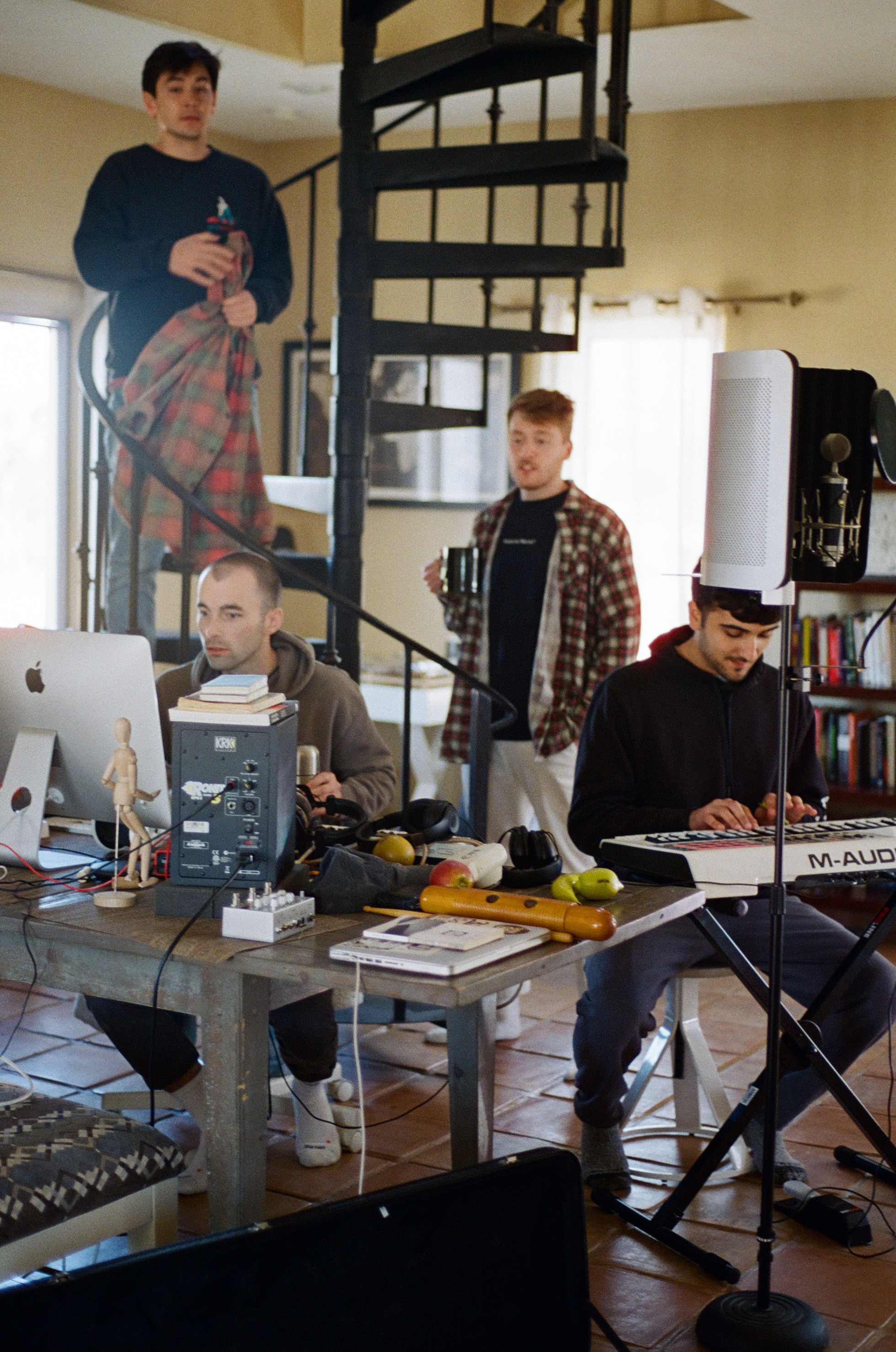 Henry Head
Henry Head
Working at Joshua Tree: Conrad Hsiang, Ethan Healy, Grant Yarber, and Ali Abu-Khraybeh.
This wasn’t the first time they got together. “It’s always a house and it’s always a different house for fresh energy. We’ve done it three times now. We set up the studio on this long dining room table and we faced it out toward the desert. There was already a piano inside and a bass, too, so we just recorded everything really natural in the middle of the room.
“I recorded the first verse on the binaural mike in the living room. As you listen to the first verse you can visualize the free space of the living room that the vocals were occupying. Some natural reverb. You hear things from across the room. The refrigerator door shuts at one point. Henry (Head) the photographer was walking down the spiral staircase behind me and you can hear the squeak.”
Healy is near the completion of his new album. “I’m going to finish up a couple of more singles to be released and I’m hoping this album will come out sometime in October.”
Reflecting on his career so far, Healy says, “To this day, I’m so surprised that this is what my life is. I’ve always felt like it was supposed to positively affect a large amount of people, but I never knew it was going to manifest in this creative way. I always thought it would be with physical therapy or something else. But I’m constantly amazed music has taken me this far and I’m still able to do it for a living. It’s crazy.”
To watch the “Second Wind” video, click here:
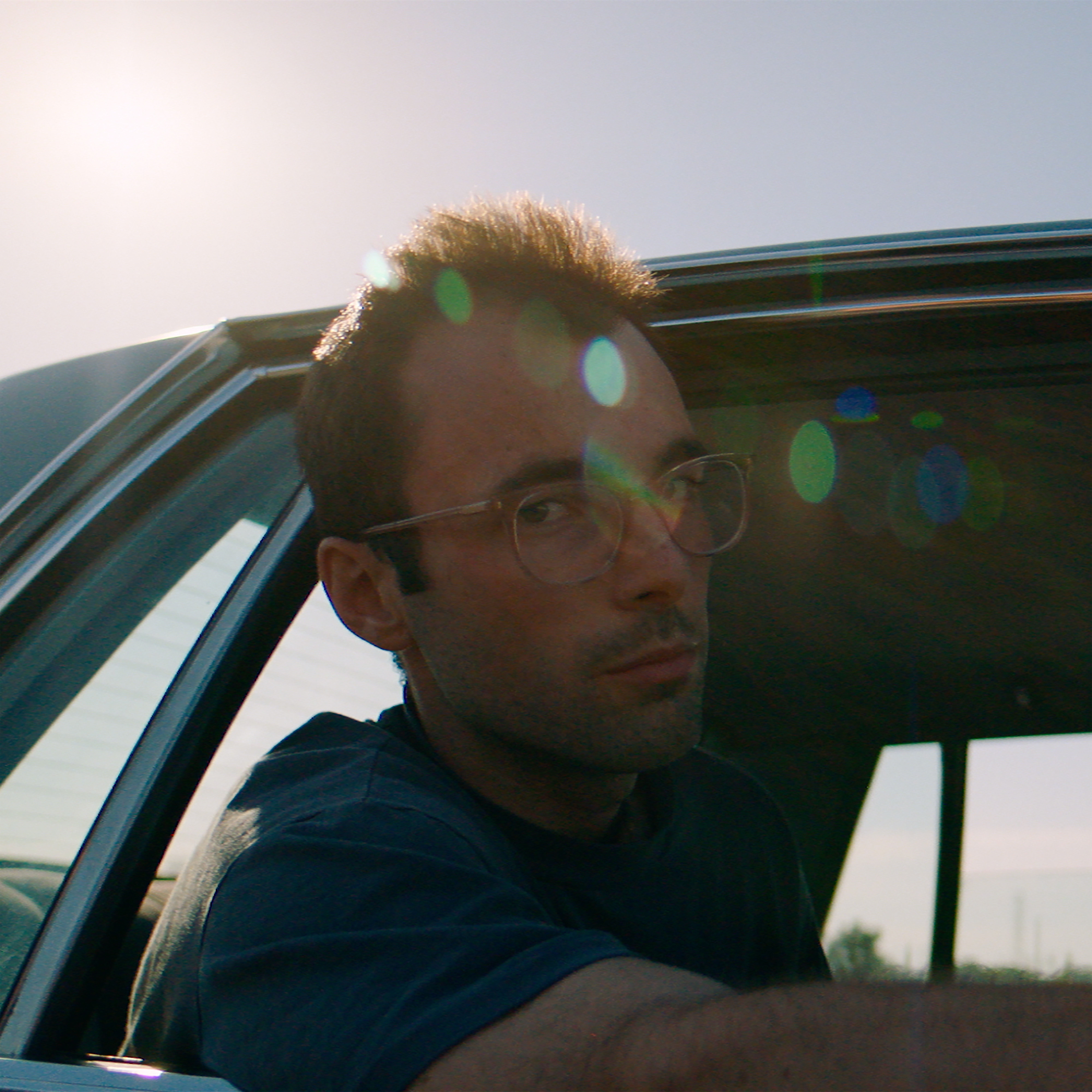
‘Second Wind’
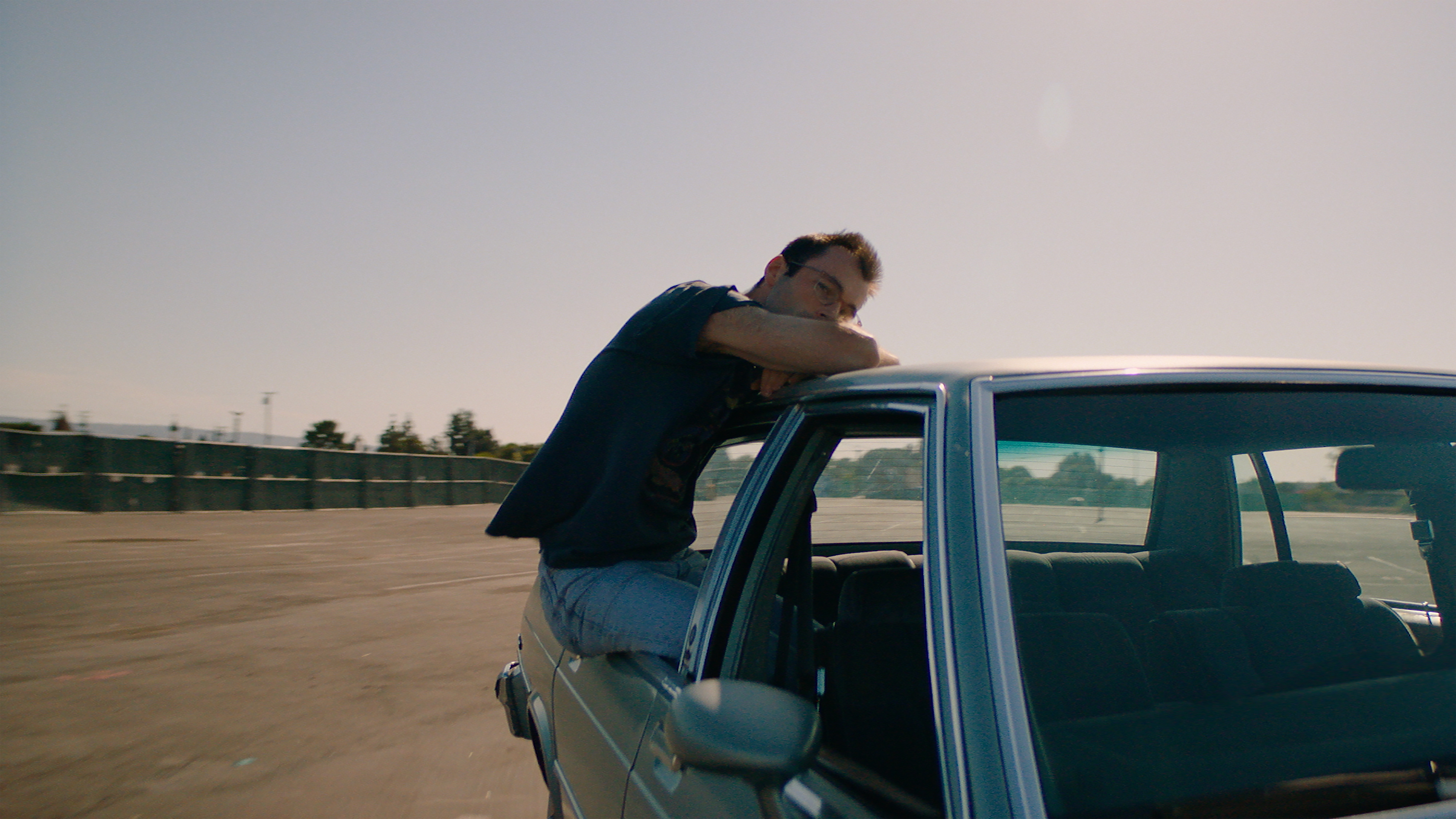
‘Second Wind’